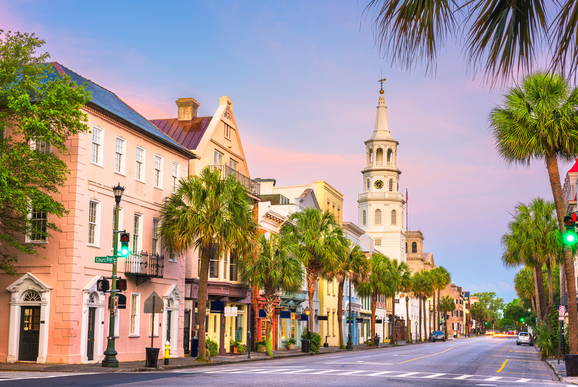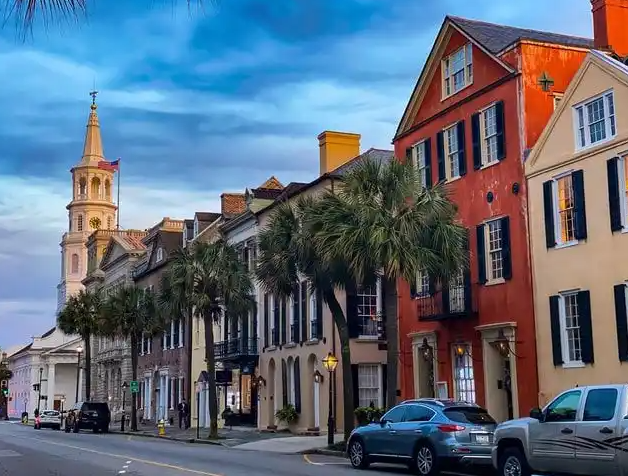Charleston, South Carolina, is steeped in rich history, vibrant culture, and stunning architecture. Founded in 1670, Charleston has witnessed many events that have shaped its own identity and the broader narrative of American history. From its early days as a bustling port city to its pivotal role in the Revolutionary and Civil Wars, Charleston’s journey is marked by resilience and transformation.
The city’s unique blend of influences—from colonial settlers to African heritage—has created a cultural mosaic that continues to thrive today. As one strolls through its historic streets, one can feel the echoes of the past resonating in the air, reminding visitors and locals alike of the trials and triumphs that have defined this remarkable place. This article delves into key events and milestones that have left an indelible mark on Charleston’s landscape.
The Founding and Early Years (1670-1700)
In 1670, English colonists seeking new opportunities in the New World established Charleston as Charles Town. The settlement was strategically located at the confluence of the Ashley and Cooper Rivers, which facilitated trade and commerce. Early settlers faced numerous challenges, including hostile relations with Indigenous tribes, disease, and harsh environmental conditions. Despite these obstacles, the colony flourished, becoming a hub for rice cultivation and trade.
By 1700, Charles Town had transformed into one of the most important ports in North America. The influx of settlers from Barbados introduced plantation agriculture to the region, leading to an increase in the importation of enslaved Africans who would work the fields. This early reliance on slave labor would shape not only the economy but also the social fabric of Charleston for centuries to come.
The Revolutionary Era (1775-1783)
The American Revolutionary War marked a significant turning point for Charleston. In 1776, residents rallied against British oppression, culminating in a series of protests and military engagements. The city’s strategic importance made it a target for British forces, leading to the infamous Siege of Charleston in 1780. General Benjamin Lincoln commanded American troops defending the city against overwhelming British forces led by General Sir Henry Clinton.
After months of intense fighting, Lincoln’s surrender on May 12, 1780, dealt a devastating blow to American morale. The British occupation lasted until 1782 when Charleston was finally liberated. This period highlighted the city’s military significance and underscored its role as a center for revolutionary thought and action.
 Source: curatedevents.com
Source: curatedevents.com
Reconstruction and Economic Recovery (1865-1900)
Following the Civil War, Charleston faced significant challenges during Reconstruction. The war had devastated much of its infrastructure and economy, leading to widespread poverty among its residents. However, resilience became a hallmark of Charlestonians as they worked to rebuild their city. Efforts were made to restore businesses and homes while adapting to new social dynamics following the abolition of slavery.
By the late 19th century, Charleston emerged as a cultural center again. The establishment of various institutions, such as museums and schools, signaled a renewed commitment to education and the preservation of history. The South Carolina Inter-State and West Indian Exposition in 1901 showcased Charleston’s recovery and cultural vibrancy, attracting visitors nationwide.
The Civil Rights Movement (1950s-1970s)
The mid-20th century brought about significant social change across America, with Charleston at the forefront of the Civil Rights Movement. Activists fought against racial segregation and discrimination through peaceful protests and legal challenges. Notable events included sit-ins at local lunch counters and marches advocating for voting rights.
The movement faced resistance, leading to landmark legislation that transformed societal norms. By fostering dialogue around race relations, Charleston began to confront its complicated history with slavery and segregation head-on. This period reshaped local governance and laid the groundwork for ongoing discussions about equality and justice.
 Source: charleston.com
Source: charleston.com
Modern Resilience (2000-Present)
In recent years, Charleston has demonstrated remarkable resilience in natural disasters such as Hurricane Hugo in 1989 and Hurricane Florence in 2018. Each event tested the city’s infrastructure and united communities in recovery efforts. Additionally, Charleston has embraced its historical significance while adapting to contemporary challenges such as climate change.
Culturally vibrant festivals celebrate its rich heritage and modern diversity—showcasing everything from Gullah culture to culinary arts. Today, Charleston stands as a testament to overcoming adversity while honoring its past—a city that continues to inspire future generations.
Charleston’s history is a tapestry woven from threads of triumphs and tribulations that reflect broader themes within American society. From its founding days through revolutionary fervor to modern resilience against adversity, each chapter reveals how this city has evolved while remaining deeply rooted in its heritage.
As visitors explore Charleston today—whether wandering through historic districts or participating in vibrant community events—they are invited not just to witness history but also to engage with it actively. This enduring spirit inspires cities across America; it reminds us that through challenges come opportunities for growth, unity, and renewal.
Charleston’s journey is far from over. It continues to adapt while honoring those who came before—an ever-evolving narrative that captivates hearts and minds alike.
Sources: en.wikipedia.org, charlestoncvb.com, charlestonmag.com, en.wikipedia.org
Header Image Source: charlestoncvb.com
